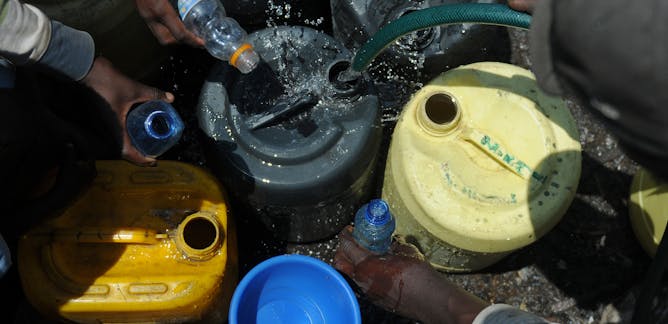
Articles on Sewage
Displaying 1 - 20 of 63 articles

Nigeria is prone to a variety of factors that lead to recurring cholera outbreaks.

Mountain tourism brings revenues to Nepal but leaves a mess behind. Local and international groups are offering new cleanup strategies.

The University of Cape Town’s new report on the impacts of climate change in South Africa found that heatwaves and water stress will affect jobs, deepen inequality, and increase gender-based violence.

The UK’s Victorian-era sewer network is at breaking point.

In South Africa, a group of citizen scientists who test water quality and log the results on a specialised app have helped keep the water supply for 4.3 million people clean.

Sewage fungus is actually not a fungus. Our expert explains what it is, where it lives and what can be done to reduce outbreaks in polluted rivers.

We sampled sewage sludge from 13 wastewater treatment plants across three states. We found every resident adds microplastics to farmland, in dried sewage sludge (biosolids) used as fertiliser.

And other ways to enjoy open water safely this summer.

The UK needs to clean its rivers and coastlines, and could look to Europe for how to do it.

Thames Water has mapped its discharges in near real time. But we still need data on the volume of sewage dumped in rivers.

Water companies recently released raw sewage near more than 100 beaches across Britain.

These maps have gone viral – here’s what they owe to 19th century cholera campaigns.

The clue is in your poo. Two experts explain the history and science behind wastewater surveillance.

Up to 42,000 tonnes a year of microplastics are removed from sewage, spread on fields as fertiliser and eventually wash back into watercourses.

The amount of microplastics in the environment is being significantly underestimated, research shows.

There are myriad benefits to recycling human waste but our reluctance seems to be based on distaste.

In spite of monsoon season and cyclone Nivar, the most recent floods are largely man-made disasters.

The roadmap predicts that by the 2030s, the sector could boost Australia’s annual GDP by around A$10 billion, create 26,200 jobs and reduce emissions by about 9%.

Water and sewerage companies should not be responsible for reporting pollution.

Victorian-era engineering is struggling under decades of underinvestment.
